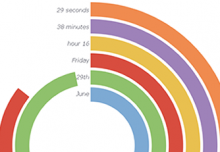Earlier this week David Menninger, the new VP & Research Director at Ventana Research, posted a blog entry entitled, “What Is Wrong with Business Intelligence?” If you haven’t read it yet, it’s definitely worth a look. You can check it out here.
In it, Menninger discusses his observations on user satisfaction, or more appropriately user dissatisfaction, with current BI solutions. According to Ventana research, only thirty-seven percent of organizations report their experiences with BI to be at least minimally satisfactory.
Menninger asserts that while the BI and analytics technology itself has improved vastly in terms of speed, function, UIs and administrative tools, the adoption rate has remained low because using a business intelligence application still feels like, well, using a business intelligence application.
Menninger feels the sheer number of separate applications a business user must run on an everyday basis creates a barrier towards BI adoption. So ironically, he purposes that in order to increase business intelligence adoption and satisfaction, providers should make their applications more ‘invisible’ to users.
In other words, users should be able to view their emails, check finances, and create dashboards from one unified application. This would require BI providers to deliver applications that assist in all business operations from top to bottom (Communications, ERP, CRM, finance, BI, etc…).
While I’m inclined to believe that a ‘unified solution’ or at least a more complete one could in fact lead to higher adoption rates, I nonetheless believe that this would place most organizations at a disadvantage by locking them into a solution for life.
First, let us consider that a ‘unified solution’ would need to seamlessly integrate the technological and engineering oriented processes with the design and human centric aspects for all business operations.
In all likelihood, this would require a major allocation of resources to cover the cost of deployment, training, and future upgrades. And depending on whether the software is server, desktop, or cloud based, there would undoubtedly be expenses for replacing outdated hardware or subscription services. Clearly, a system like this would not be easy to substitute were the need to arise.
Additionally, consider the low probability of creating a ‘one size fits all’ solution. Because a ‘unified’ solution is likely to be completely proprietary, users would be unable to make the necessary adjustments were to find that any one aspect of their solution were inadequate for their needs.
At InetSoft, while we may not yet be near creating a ‘unified solution’, we believe that the best way to approach this task is by creating an open standards platform that can easily be integrated with existing solutions. In both the short and long term, this leads to lower costs and greater options for the consumer. In recent years we’ve even added access to proprietary ERP applications in an effort to meet the eclectic needs of our customers.
So what do you see as the greatest obstacles to increasing BI adoption and how would you approach the task of increasing it?





